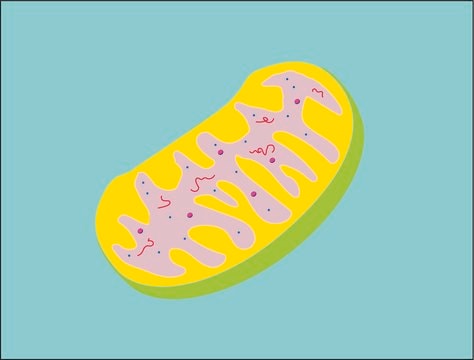MIT1000
Mitochondria/Cytosol Fractionation Kit
This Mitochondria/Cytosol Fractionation Kit provides reagents for quick & efficient isolation of intact mitochondria from cultured cells.
Zaloguj sięWyświetlanie cen organizacyjnych i kontraktowych
About This Item
Kod UNSPSC:
12161503
eCl@ss:
32161000
NACRES:
NA.75
Polecane produkty
Poziom jakości
reaktywność gatunkowa (przewidywana na podstawie homologii)
all
producent / nazwa handlowa
Chemicon®
metody
cell culture | mammalian: suitable
Zastosowanie
sample preparation
Warunki transportu
dry ice
Opis ogólny
Mitochondria, sometimes described as the “power plants” of the cell, are sites where most of the energy production in eukaryotic cells takes place. The synthesis of most of the adenosine triphosphate (ATP) occurs in these double membraned organelles that are found in living cells. ATP production by the mitochondria is done by the process of respiration, which uses oxygen to generate energy. This is a very efficient process for using food energy to make ATP. In addition to supplying cellular energy, mitochondria are involved in a range of other processes, such as signaling, cellular differentiation, cell death, as well as the control of the cell cycle and cell growth. Mitochondria also regulate crucial apoptosis signaling pathways. The number of mitochondria in a cell varies widely by organism and tissue type. Many cells have only a few mitochondria, whereas others can contain several thousand.
Millipore’s Mitochondria/Cytosol Fractionation Kit provides reagents for quick and efficient isolation of intact mitochondria from cultured cells. This kit allows mitochondrial isolation by using a convenient table top microcentrifuge, and can be used to separate an enriched mitochondrial fraction (heavy membrane fraction) from cytosolic fraction (light membrane fraction). Such separation is useful for studying apoptosis and signaling pathways between the two fractions, by Western blotting or ELISA.
The kit contains sufficient materials for the analysis of 50 samples.
Millipore’s Mitochondria/Cytosol Fractionation Kit provides reagents for quick and efficient isolation of intact mitochondria from cultured cells. This kit allows mitochondrial isolation by using a convenient table top microcentrifuge, and can be used to separate an enriched mitochondrial fraction (heavy membrane fraction) from cytosolic fraction (light membrane fraction). Such separation is useful for studying apoptosis and signaling pathways between the two fractions, by Western blotting or ELISA.
The kit contains sufficient materials for the analysis of 50 samples.
Zastosowanie
Research Category
Apoptosis & Cancer
Apoptosis & Cancer
Komponenty
Isotonic Mitochondrial Buffer (CS204255): 50 mL
Mitochondrial Lysis Buffer (CS204257): 5 mL
Protease inhibitor cocktail (CS204253): 1 mL
Anti-Bcl2 (05-729-25UG): 25 μg
Anti-GAPDH (CS204254): 25 μg
Mitochondrial Lysis Buffer (CS204257): 5 mL
Protease inhibitor cocktail (CS204253): 1 mL
Anti-Bcl2 (05-729-25UG): 25 μg
Anti-GAPDH (CS204254): 25 μg
Przechowywanie i stabilność
All components should be store at -20°C for up to one year from date of receipt.
Informacje prawne
CHEMICON is a registered trademark of Merck KGaA, Darmstadt, Germany
Oświadczenie o zrzeczeniu się odpowiedzialności
Unless otherwise stated in our catalog or other company documentation accompanying the product(s), our products are intended for research use only and are not to be used for any other purpose, which includes but is not limited to, unauthorized commercial uses, in vitro diagnostic uses, ex vivo or in vivo therapeutic uses or any type of consumption or application to humans or animals.
Ta strona może zawierać tekst przetłumaczony maszynowo.
Hasło ostrzegawcze
Warning
Zwroty wskazujące rodzaj zagrożenia
Zwroty wskazujące środki ostrożności
Klasyfikacja zagrożeń
Aquatic Chronic 3 - Eye Irrit. 2 - Skin Irrit. 2
Kod klasy składowania
10 - Combustible liquids
Certyfikaty analizy (CoA)
Poszukaj Certyfikaty analizy (CoA), wpisując numer partii/serii produktów. Numery serii i partii można znaleźć na etykiecie produktu po słowach „seria” lub „partia”.
Masz już ten produkt?
Dokumenty związane z niedawno zakupionymi produktami zostały zamieszczone w Bibliotece dokumentów.
Simon C Baker et al.
The American journal of pathology, 186(5), 1267-1277 (2016-03-24)
Recreational abuse of ketamine has been associated with the emergence of a new bladder pain syndrome, ketamine-induced cystitis, characterized by chronic inflammation and urothelial ulceration. We investigated the direct effects of ketamine on normal human urothelium maintained in organ culture
Turki Y Alhazzazi et al.
Anticancer research, 36(1), 49-60 (2016-01-02)
The survival rate of patients with head and neck squamous cell carcinoma (HNSCC) stands at approximately 50% and this has not improved in decades. This study developed a novel sirtuin-3 (SIRT3) inhibitor (LC-0296) and examined its role in altering HNSCC
Yoshimi Endo Greer et al.
Oncotarget, 9(26), 18454-18479 (2018-05-03)
We report a novel mechanism of action of ONC201 as a mitochondria-targeting drug in cancer cells. ONC201 was originally identified as a small molecule that induces transcription of TNF-related apoptosis-inducing ligand (TRAIL) and subsequently kills cancer cells by activating TRAIL
Pedro Escoll et al.
Cell host & microbe, 22(3), 302-316 (2017-09-05)
The intracellular bacteria Legionella pneumophila encodes a type IV secretion system (T4SS) that injects effector proteins into macrophages in order to establish and replicate within the Legionella-containing vacuole (LCV). Once generated, the LCV interacts with mitochondria through unclear mechanisms. We
Kui Wang et al.
Autophagy, 7(9), 966-978 (2011-05-26)
Quercetin, a dietary antioxidant present in fruits and vegetables, is a promising cancer chemopreventive agent that inhibits tumor promotion by inducing cell cycle arrest and promoting apoptotic cell death. In this study, we examined the biological activities of quercetin against
Nasz zespół naukowców ma doświadczenie we wszystkich obszarach badań, w tym w naukach przyrodniczych, materiałoznawstwie, syntezie chemicznej, chromatografii, analityce i wielu innych dziedzinach.
Skontaktuj się z zespołem ds. pomocy technicznej






